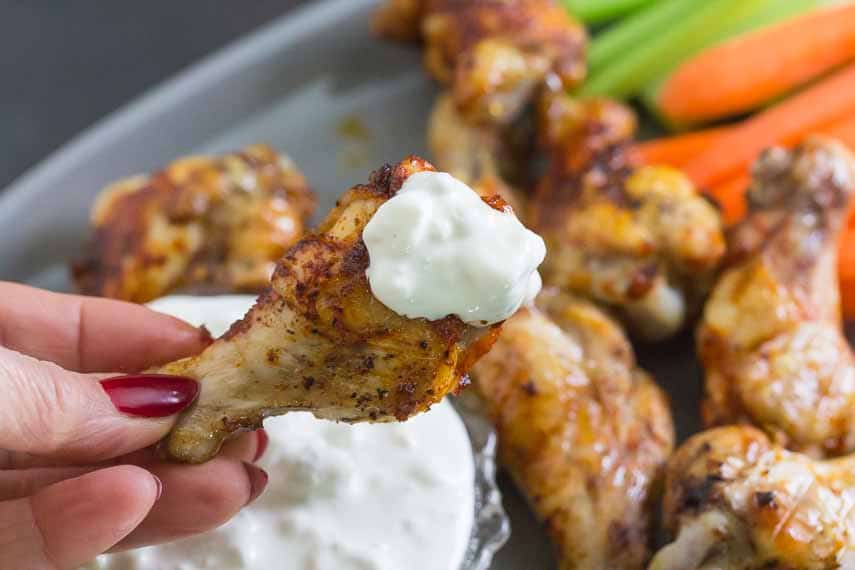Let’s Eat Some Wings!
Chicken wings used to be dirt cheap, but nowadays they can command as much as other chicken parts, so we want to make sure to buy ones that give us a meaty result and suit our needs.

Every chicken wing has three parts: the part closest to the body of the chicken is referred to as the “drumette”, because when separated out it sort of looks like a tiny drumstick/chicken leg. You can see the drumette on the right of the image.
The next part, connected to the drumette, is called the “flat” and it is indeed less round and more flat than the drumette and even in shape all around. The flat is in the middle of the image. The last part is the “wingtip”, which has very little meat on it and is pointy and somewhat feather shaped.
There are uses for all 3 parts and it is important to know which parts you use for what. Yup, that’s the wing on the left.
1, 2, 3 Parts: Which to Use
The reason why I am delving so deeply into chicken wings is because we love them at the Test Kitchen and you will be finding several recipes for them and we want you to get the most out of the poundage that you are paying for.
For chicken wing recipes that we create in our kitchen, such as our Maple Dijon Chicken Wings with Fresh Herbs, Sticky Maple Ginger Soy Chicken Wings, Pesto Chicken Wings, 5-Spice Ginger Chicken Wings, and Smoky Spicy Chicken Wings with Blue Cheese Dressing you will be using the drumettes and flats, so it is optimum if you can buy just those parts. But what if your market only sells wings with all 3 joints intact? What do you do?
You have two choices. You can roast the whole, 3 jointed wing and nibble away. Whatever sauce is included in the recipe will not go as far, and you might want to do some fancy math and increase the rubs, sauces and glazes.
Or, if you want separate pieces, you will need to get out a sharp knife. While you are at it, separating the drumettes from the flats, cut off the wingtip as well and throw them in a heavy zip-top plastic bag and toss in the freezer.
When you have amassed several tips – and any other chicken parts that you might accumulate during food prep, like chicken backbones if you are spatchcocking (butterflying) a chicken, you can use these chicken parts to make low FODMAP Chicken Stock.
Size Matters
If you peruse recipes for chicken wings you might notice that some of the math doesn’t seem to add up when you compare one recipe to another. This is because chicken wings can vary hugely in size and weight.
You can find wings that are barely 1 ounce (30 g) and others that are more than double that size. Chain restaurants will take advantage of this fact buy enticing you to come in for a bucket of 24 wings for a small amount of money and then what you get are teeny, tiny wings with no meat on them.
I try to find wings that are about 2 ounces for each individual piece. That means each drumette and each flat is about that size. The drumette will be a bit heavier, the flat a bit less. If you are buying from a meat counter and can speak to a butcher you can discuss your needs and they can hopefully help you out.
If all you can get is smaller wings, go by weight.















